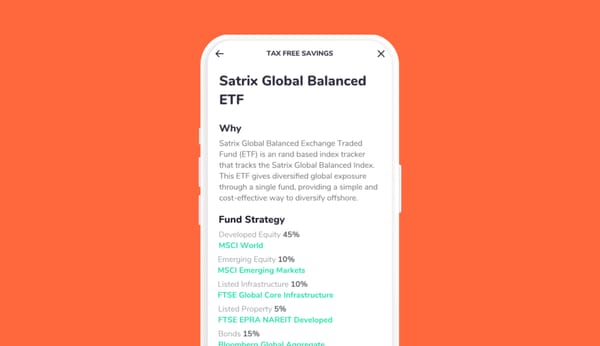As we celebrate Worker’s Day in the coming week, that time in our life when we actually stop working and go into retirement may seem like a faraway concept for many of us. Last we checked, around 70% of the Franc customer base was 35 years old or younger. For those of you at that life stage, there are still at least 30 years left before retirement (assuming you retire at 65).
This might give you the false belief that retirement is something you can worry about later on in life – something too many people unfortunately do. The result? Only 6% of South Africans can actually retire comfortably and live the same quality of lifestyle they did before retirement.
When should you start saving for retirement?
The short answer: now. Or at least, as soon as you possibly can. The earlier you start putting money towards your retirement, the longer you let compound interest work its magic, and start earning passive income.
What you should be thinking about when planning for your retirement
To calculate how much you need to have invested for your retirement, and how much to put away each month to get there, you need to think about these four factors:
- Your age
- Your income
- How much you already have invested
- How much you can afford to invest every month
With this information, there are a few online calculators out there that show you how you currently shape up in terms of your existing investments against what you need to retire.
Here’s what the calculator will help you work out, and what you need to consider long before retirement:
1. How your salary and contributions will grow over time, based on inflation
Our retirement calculator sheet – and other online retirement calculators – make some general assumptions around how your salary and monthly investment contributions will grow over time. Your monthly salary and how much you’ll be able to invest in future will be linked to inflation, which is averaged out at 5%.
2. What your return on investment will be
The calculator also assumes you’re investing your money into a retirement product (read more about the different retirement fund options) that’s adequately invested into the stock market. This type of fund should, over a long period of time, produce returns above inflation. The model uses 8% as the long-term projected return of your investment.
3. How much you’ll need in retirement every month
The other thing the calculator will take into account is how much you need to live off as a percentage of your existing income when you retire. Your expenses normally reduce after retirement, given that family, travel and other costs should go down. That’s why the generally accepted rule is that you’ll only need 75% of your income in retirement each month.
4. How long you'll be in retirement for
Sometimes the calculator may also ask you how long you think you’ll be in retirement. This is a nice way of asking when you think you’ll die (eek!). Obviously nobody knows when they’ll kick the bucket, but the common assumption (given how long people are living now) is 20 years. As healthcare improves and people start living longer, this assumption may need to change. Already in some countries the retirement age is being increased to factor in higher average life expectancy. For the sake of simplicity, though, we’ve kept our formula to the accepted 20 years.
Wrapping Up
Once all of these things are taken into account, the calculator will use the information to let you know whether you’re on track or not. If you’re not on track, it will also show you how much more you would need to start investing every month in order to bridge the gap.
The earlier you do this calculation, the better – small changes made earlier on can have the same impact as larger changes made later in life.


![Planning for Your Retirement Should Start Now [+ downloadable calculator]](/blog/content/images/size/w2000/2024/02/Man-and-woman-planning-their-retirement.png)




![How & Why You Should Do a Financial Reset [+ downloadable financial reset journal]](/blog/content/images/size/w600/2024/12/Setting-goals-for-the-year.png)


